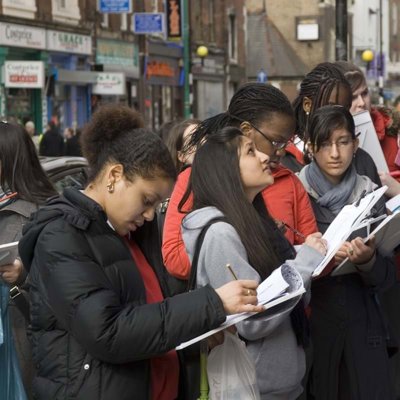The quality of life at a national or global scale is measured by the Physical Quality of Life Index (PQLI), devised in the 1980s. The PQLI is the average of three characteristics: Literacy, life expectancy and infant mortality. However, the term is often used in urban studies of towns or cities to represent a multiple index of different criteria that reflects residents' housing standards and the environmental conditions in which they live. Other indicators, such as traffic levels, complete the picture of a particular area.
Quality of life investigations and fieldwork focus on the inequalities between different areas within a city or ward. By recording, mapping and analysing spatial variations in different features and indicators, the investigation can start to examine the cause and effect of such inequality, or the impact of planning decisions or redevelopment schemes. There are also dis-amenities in cities, features that have a negative effect on local environmental conditions, such as a polluting incinerator or noisy nightclub. Such effects will impact on the quality of life for residents in the surrounding local areas and often decline with increasing distance from the nuisance.
The basic primary data for this investigation is obtained from surveys of land use plus housing condition and environmental quality at various sample sites in chosen areas. The number of locations should be a reflection of the location area (population density) and the amount of time required. There are additional techniques that can be used, as shown in below:
-
General landscape evaluation. Based on gut feelings, for example boring vs. stimulating, ugly versus attractive, crowded versus peaceful, threatening versus welcoming, drab versus colourful. A street quality survey can be used
-
Scale of visual pollution. Scores from zero to three: no pollution - badly polluted. Criteria might include, obviousness of pollution, litter, smalls, state of buildings, impact on surrounding area
-
Index of burgaralibility. Based on penalty points. Absence of burglar alarm, security cameras, metal bars on windows, metal shutters, neighbourhood watch sticker etc
-
Graffiti assessment. Criteria include: size of words, size of pictures, style of writing, visible from, method of writing/inscription, for example pen, paint, etc
-
Physical condition of buildings/index of decay. Range of options; none, little, some, much. Criteria: deterioration of walls, peeling paint, slipped tiles, broken glass, broken gutters, etc
-
Shopping survey. Looks at shopping quality and street appearance. Quality of shops: type, other land use, quality of goods, number of vacant units, etc. Street appearance: safety for pedestrians, crowdedness, street cleanliness, etc
It makes sense to use census units, for example output areas, (so that other secondary information can be added to the picture. Data and maps can be obtained from the Office of National Statistics' Neighbourhood statistics website.
Various techniques can be used to display information, for example radar plots (figure two) or a rose diagram showing visual quality data (figure three). Of course, annotated photographs can be used to ‘paint a picture' of what somewhere is like (a geographical narrative). Also video/DVD and audio files, for example podcasts, can be used as part of the evidence portfolio. Additional data can come from the internet in the form of geo-demographic data which is postcode derived. Two well know example websites include Zoopla and Checkmyfile.
Once all the data has been processed and presented, children can then work in groups to evaluate the best and worst areas, and then to devise strategies as to how they might suggest that improvements can be made.
